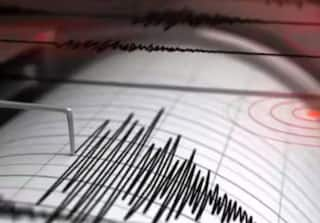Total Solar Eclipse 2021 On December 4: All About The Last Eclipse Of The Year
The only total solar eclipse of 2021 will occur on December 4, with the total phase being visible only over Antarctica, and the partial phase in regions located in the path of Moon's umbra.

New Delhi: A total solar eclipse will occur on December 4 across Antarctica — the only place where the total phase of the solar eclipse will be seen.
The partial phase of the solar eclipse will be visible in southern parts of Australia, New Zealand, Africa, and South America, and the Pacific, Atlantic and Indian Ocean, according to timeanddate.com.
This final eclipse of the year is the only total solar eclipse of 2021. The next total solar eclipse will occur on April 20, 2023.
Types Of Solar Eclipse — Total, Partial, Annular, Hybrid
A total solar eclipse occurs when the New Moon comes between the Sun and Earth, and casts the darkest part of its shadow, called the umbra, on Earth.
The Moon entirely covers the Sun during a total solar eclipse, which is visible only in regions located in the path of the Moon's umbra.
Those outside the path see a partial eclipse, with the Moon blocking only a part of the Sun.
An annular solar eclipse is one in which the edge of the Sun remains visible as a bright ring around the Moon.
Another type of eclipse is a hybrid solar eclipse, also known as an annular-total eclipse, which can change from an annular to a total eclipse, or from a total to an annular eclipse, along the observer's path.
A solar eclipse usually occurs nearly two weeks before or after a lunar eclipse. A partial lunar eclipse occurred last month on November 18 and 19. The 2021 total solar eclipse will happen two weeks later.
ALSO READ | Why A Solar Eclipse Always Occurs 2 Weeks Before Or After A Lunar Eclipse
Phases Of A Total Solar Eclipse
A total solar eclipse takes place in five stages — beginning of partial solar eclipse (first contact); beginning of total solar eclipse (second contact); totality and maximum eclipse; end of total eclipse (third contact); and end of partial eclipse (fourth contact).
In the first contact phase, the Moon becomes visible over the Sun's disk.
The Moon covers the entire disk of the Sun, with some observers in the Moon's umbral path seeing the diamond ring effect, during the second contact phase.
In the totality and maximum eclipse stage, the Moon completely covers the disk of the Sun, with only the Sun's corona being visible, as a result of which the sky goes dark, and temperatures drop. The midpoint of the time of totality of a solar eclipse is known as the maximum point of the eclipse.
The third contact phase is the one in which the Moon starts to move away, and the Sun reappears.
When the Moon leaves the Sun's disk, the partial eclipse ends.
ALSO READ | Last Eclipse Of 2021 Is On December 4. Who Can See & What’s Special About It
How To See 2021 Total Solar Eclipse?
You can determine the visibility of the 2021 total solar eclipse in a particular region using two interactive eclipse maps on the timeanddate.com website — a detailed eclipse path map, and a 3D globe map. The website also provides the exact time of the eclipse at a particular location.
It may be mentioned that the eclipse won’t be visible in India. However, you can see NASA's orthographic map — a detailed map of the eclipse's visibility — on December 4.
Using NASA's animated map, one can visualise the Moon’s shadows across Earth.
Google Maps will also have an interactive map of the eclipse's path.







































